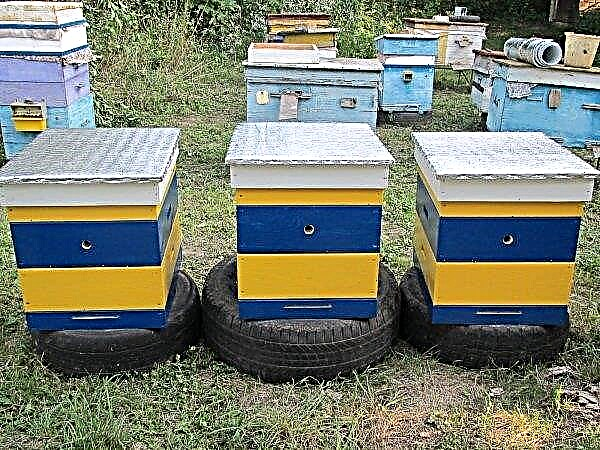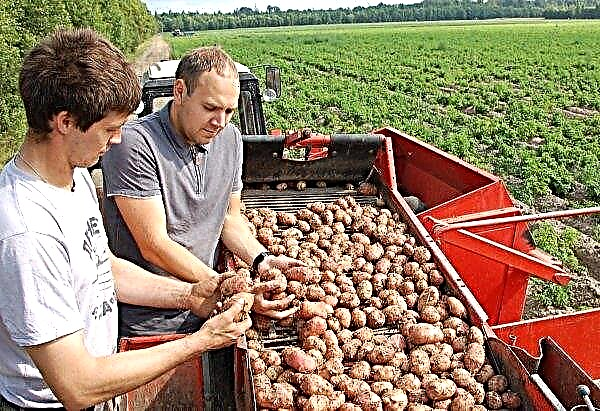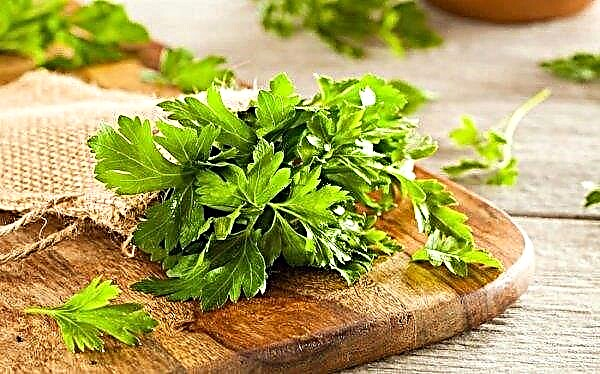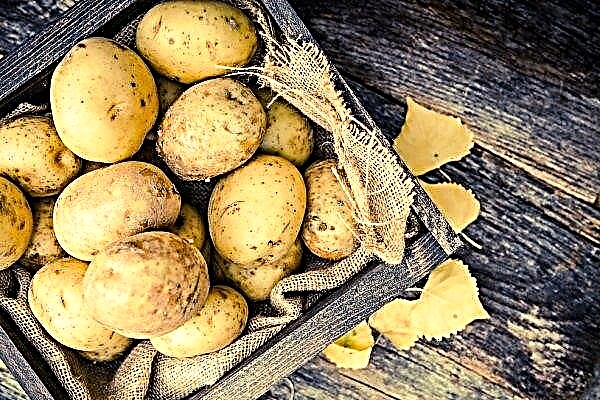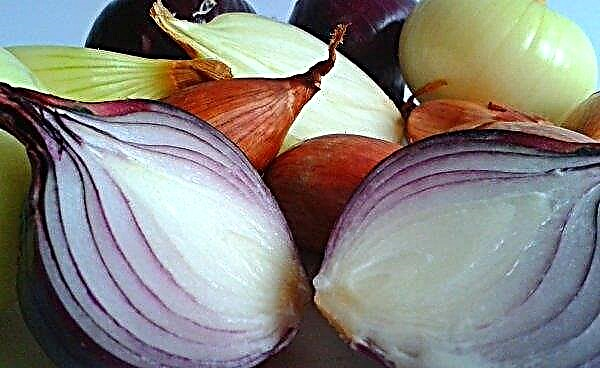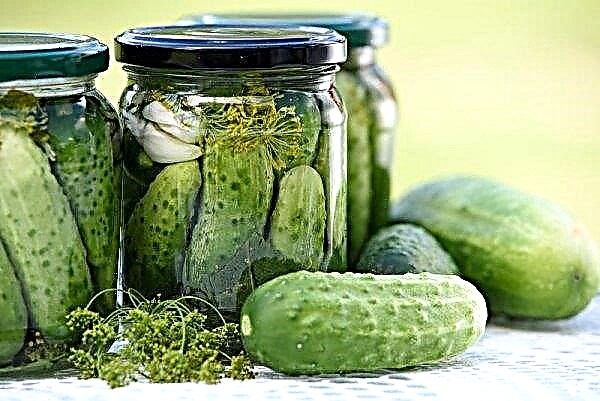Perennial primrose is a beautiful plant with bright and large inflorescences. Due to its unpretentiousness in care, both experienced gardeners and beginners in this field can engage in the cultivation of crops. This article will discuss the main types of primrose, as well as the technology of planting and care.
Features of long-standing primrose as a garden culture
In natural conditions, garden perennial primrose grows in the highlands of Europe and Asia. She prefers to grow in regions with a neutral climate, that is, where there is little rainfall but no drought. Small shrubs have high frost resistance - up to -20 ° С. Some gardeners call primrose a harbinger of spring. This is due to the fact that the flowers grow immediately after snowdrops. Primroses appear in late February or early spring. It all depends on how warm the winter was.

Flowering lasts a long time, from March to July. In Russia, a huge number of varieties of perennial primrose is grown (about 400), so every gardener will be able to find the species that suits him to decorate the garden.
Beautiful leafy rosettes are formed on the bushes. Bright inflorescences of different shades grow from them. A characteristic feature of primrose is the presence of snow-white, pink, purple and yellow flowers. Their color and height are affected by the selected variety.
Important! On the leaves of primrose there are chemicals that can provoke an allergic reaction in a person. Therefore, you need to work with the plant in clothes with long sleeves and gloves.
Types and varieties of primroses
There are a huge number of primroses that are grown in Russia. You can choose exactly the type that fits perfectly into the garden. All types of primrose are characterized by bright shades. Therefore, you need to carefully consider each variety.
Common (Primula vulgaris)
Ordinary primrose is grown mainly in pots. The height of the plant is not more than 10 cm. The difference is that the bushes do not have stems. Plants are found with flowers of different shades - white, black, lilac and scarlet. Two-color and three-color flowers can also be found. They gather in umbellate inflorescences. The culture begins to bloom in February. The leaves are elongated, up to 25 cm. The lower part of the leaf plate is slightly pubescent.

The most common varieties of this type:
- Harlequin bicolor.
- Jackpot.
Common primrose does not respond to night frosts, so pots with it are allowed to be installed on balconies. If the temperature drops below -4 ° C, it is better to bring the culture into the room so as not to violate the timing and duration of flowering.
Haller's primrose (Primula halleri, P. longiflora)
The Haller variety has almost completely disappeared. In nature, it is very difficult to meet this primrose. Primula halleri is included in the Red Book, so it is forbidden to dig up bushes or pluck inflorescences. The name of the culture was obtained in honor of the scientist A. Galler. The variety refers to powdery primrose.

The description is as follows:
- height - no more than 45 cm;
- there is a white or yellow coating on the bushes;
- umbellate inflorescences, orange;
- winter hardiness - up to -15 ° С;
- life expectancy is up to 10 years.
Did you know? There is a Scandinavian legend that says primrose is the key by which the goddess Freya opens the door to spring.
Spring (Primula veris, synonym for P. officinalis)
Description of spring primrose is as follows:
- Shrub height - up to 40 cm.
- The leaves are long, dark green, with a slight pubescence on the surface.
- Inflorescences of bell-shaped structure.
- The cup of the flower is light green, and the crown is yellow, with bright spots of orange hue.
Primula veris begins to bloom in March or April (depending on the climatic conditions of the region). Prefers to grow in the lowlands or near the highlands.

Auricular (Primula auricula)
The ear-shaped primrose grows to 35 cm. Young leaves are characterized by a dark green color, covered with a slight pubescence. They are going to a mundane outlet. Over time, the leaf plate becomes smooth, with pronounced veins.
Flowers of a saturated violet shade, bell-shaped. They have a pleasant apricot aroma. Primula auricula blooms in April or early May. Culture is growing in the highlands of the Alps and the Carpathians. Also often found in the Balkans. The most common variety of ear-shaped primrose is Primlet.

Small (Primula minima)
Primrose small prefers to grow in a mountainous area. The stem of the primrose is not long, only 1 cm. The leaves are strong, dark green. They are extended outward, and in the upper part there are 3 teeth.
Did you know? In Germany, at primrose, they read fortune for Easter. The girl who first finds this flower will successfully marry in the same year.
The flowers are purple, single. They have a bell-shaped shape. The root system is developed, bulbous type. This allows the culture to withstand severe frosts (up to -20 ° C). Most often, Primula minima is found in the Alps and Apennines. Popular varieties of this species are: Danielle, Rosanna and Libre.

Mealy (Primula farinosa)
Description of powdery primrose:
- height - 30 cm;
- the lower part of the leaves is mossy, and the upper part is smooth, with pronounced veins;
- elongated sheet plate, saturated green hue;
- the flowers are pink.
 Primula farinosa blooms in early May. Found in the highlands of South America and Europe
Primula farinosa blooms in early May. Found in the highlands of South America and Europe
High (Primula elatior)
Perennial tall primrose grows in the highlands of the Carpathians and the Urals. The height of the bushes is up to 40 cm. The leaves are elongated, egg-shaped. They are wrinkled, with a little pubescence. A large rosette is formed from the leaves.
Inflorescences of Primula elatior are two-tone: the crown is yellow in color, and the neck has an orange color. Flowers form on hanging petioles. The most common varieties of high primrose are Kolosea and Rosea.

Reverse conic or obconica (Primula obconica)
Reverse conic primrose was first bred in China. It grows up to 30 cm. Flowers gather in umbrella inflorescences. They have a white, red and purple hue. The leaves of the obconica are formed on elongated petioles. They have an oblong-ovoid shape. Leaf plates are assembled into sockets, inside of which stems are formed. Propagated by Primula obconica, mainly by seeds.

Malva-like (soft) primrose or malacoids (Primula malacoides)
Malva-like primrose has been bred in China. She prefers to grow in mountainous areas, where calcareous soil prevails. The primrose malacoids has white, red and purple flowers. Inflorescences are umbrella-shaped, up to 8 cm in diameter. Primula malacoides blooms for 3 months, from May to July. Leaves are rounded, green. The surface of the leaf plate is covered with a small amount of powdery coating.

Japanese (Primula japonica)
Description of Japanese primrose:
- Plant height - up to 60 cm.
- 20 cm long sheet plate.
- Leaf shape - ovoid.
- Flowers have a yellow tint.
After flowering, boxes are formed on the Primula japonica bushes, inside of which there are seeds. They can not be collected, because under the influence of wind they will scatter on their own throughout the site. The most common varieties: Alba (white flowers) and Apple Blossom (pale pink color).

Outdoor primrose planting
In order for the garden plot to be transformed without delay in the spring, it is necessary to conduct a proper planting. Wherein planting time should be taken into account so that the root system does not die due to improper climatic conditions.
Also follow planting technology. This will preserve the structure of the rhizome, which will contribute to the rapid formation of inflorescences.
Landing time
Only two-year-old seedlings are suitable for planting, on the surface of which there are no signs of diseases and pests. Purchase planting material in specialized, proven nurseries to verify the quality of the plants.
The optimal time for landing is September. This will allow shrubs to harden in the soil, which will increase the frost resistance of the crop.
Video: Garden primrose - planting and care in the open ground
Technology planting primrose
It is necessary to plant a perennial garden primrose in nutritious and well-moistened soil with a neutral pH level. Therefore, in the spring you need to dig a site and make organic fertilizers. 30 kg of humus are distributed per 1 m². Weeds should also be regularly removed along with the roots to reduce the risk of pest larvae.
3 days before planting, you need to process the planting material with potassium permanganate and the Epin growth stimulator. First, the plant is disinfected (1 tsp. Crystals of manganese in 3 l of water). Pour the primrose roots with a solution and let stand for 30 minutes. To stimulate the development of primrose, a solution is prepared (30 g of the drug per 5 l of water), inside which the roots of the seedlings are placed. Soak it for 3 days.
Mark the area before planting so that the distance between the holes is at least 20 cm. If you are going to plant varieties with large bushes, then the distance can be increased to 30–40 cm.
Landing technology is as follows:
- Dig holes 20 × 25 cm in size.
- Pour brick crumb drainage to the bottom. Its layer should be 7 cm.
- Cover the drainage with garden soil.
- Place a seedling inside and carefully distribute its roots.
- Sprinkle with earth and pour 5 liters of water.

Outdoor primrose care
Long-term garden primrose unpretentious in care. Due to the high frost resistance, the culture does not require additional shelter for the winter.
The main stages of care are watering, fertilizing and loosening the soil. Pruning should also be done regularly to preserve the beauty of the crown and protect shrubs from diseases and parasites.

Watering
In spring and summer, you need to water the bushes abundantly, but not to allow stagnation of moisture in the soil. The trunk circle must always be moist so that the root system develops better.
Watered primrose once every two weeks. At least 10 liters of clean, settled water are poured under each bush. If arid weather prevails in the summer, then at least 20 liters of water per plant should be used.

Top dressing
Fertilizers are applied regularly in spring, summer and autumn.. In the spring, nitroammophoska (40 g per bush) is added under each bush. Before flowering, infusions based on manure should be used (1 kg per 5 liters of water). Under the bush primrose pour 1 liter of solution. In summer, top dressing is carried out using potassium nitrate (30 g per plant).
In the fall, superphosphate is used (50 g for each shrub). Thanks to this mineral fertilizer, the winter hardiness of the crop increases.
Important! Before watering and top dressing, the gardener will have to loosen the top layer of soil. Thanks to such actions, nutrients and moisture will penetrate better into the root system.
Pruning
The first pruning is carried out in early March, as soon as the snow melts. It is necessary to remove inflorescences that have dried.
In the fall, pruning is not recommended. This is due to the fact that the leaves provide nutrition to weak roots. If they are cut off, the development of primrose will be disrupted.

Perennial primrose after flowering
Garden perennial primrose requires quality care after flowering. It is necessary to properly weed the top layer of soil and eradicate weeds.
Also do not forget to prepare the culture for winter. The quality of your actions determines how much the bushes will be affected by severe frosts.
Autumn time
With the onset of autumn, it is necessary to loosen the topsoil so that a sufficient amount of oxygen gets into the root system. Also remove weeds, because they can provoke the appearance of pest larvae.
 It is not recommended to remove leaf sockets. They are necessary for sheltering the root system.
It is not recommended to remove leaf sockets. They are necessary for sheltering the root system.
Wintering
A week before the cold snap, it is necessary to cover the plants with coniferous branches or dry straw. The thickness of the shelter should be at least 7 cm in order to reliably protect the root system from hypothermia.
If you live in regions where winters are warm, then covering primrose is not necessary. When the snow begins to melt in spring, make sure that no ice layer appears on the surface of the soil. This can lead to the debate of the flower and its death.

Reproduction of primrose
Perennial garden primrose can be propagated in several ways:
- by seeds;
- dividing the bush;
- leaf type cuttings.
If you want to plant primrose with seeds, then you need to plant them in containers in early May (seedlings will appear in October). The optimal time for sowing in open ground is September or October. Treat the seed with a manganese solution (1 hour per 5 liters of water) to disinfect them. After that, they are dried and placed in containers previously filled with a nutrient mixture. You can cook it yourself by mixing garden soil, sand and humus (in a ratio of 2: 1: 1).
Sprinkle seeds on top of the nutrient mixture and deepen a little. Tanks are covered with plastic wrap. Containers are installed in a room whose temperature is from + 19 ° C to + 22 ° C. After 21 days, when the first shoots appear, you can remove the shelter.
Video: How to sow primrose in winter, seed stratification
Growing seedlings from seeds is as follows:
- With the advent of the first pair of leaves, plants dive. Tanks are filled with a nutrient mixture. The distance between plants is 2 × 2 cm.
- After 50-60 days, when the primrose bushes begin to come into contact with each other, they are transplanted into separate containers (diameter not more than 8 cm).
- You need to water young plants 3 times a day, using 500 ml of water. Also do not forget to protect the bushes from direct sunlight.
- In September, primrose is placed in a greenhouse, where it should grow at a temperature of + 10 ° C.
- In early October, transplanted to a permanent place in the open ground, where it will grow constantly.
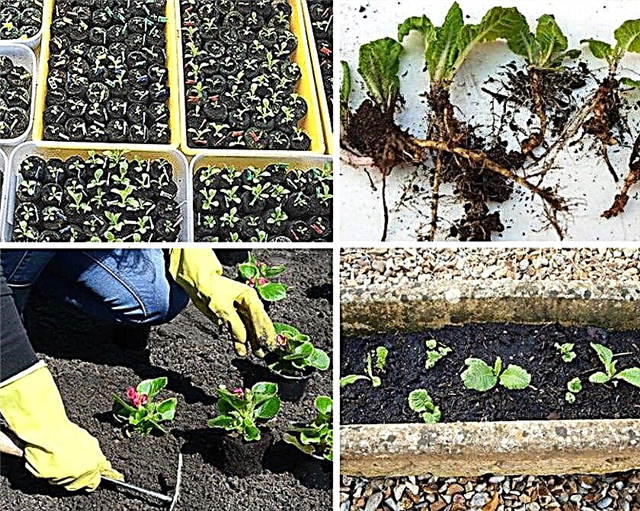
If you propagate the primrose by dividing the bush, it is better to do this in June.
The technology is as follows:
- Dig a bush and divide the root system into several parts. Each of them must have an escape, thanks to which development will be carried out.
- Remove dry fibers to stimulate the roots.
- Plant the plant in open ground.
- Pour fungicide solution as a preventive measure against diseases and pests.
 Irrigate the soil every 2 days to ensure a sufficient level of humidity. By the onset of frost, the bushes will grow stronger, and in spring beautiful flowers will appear on them.
Irrigate the soil every 2 days to ensure a sufficient level of humidity. By the onset of frost, the bushes will grow stronger, and in spring beautiful flowers will appear on them.
You can also propagate primrose cuttings. To do this, cut the sheet plate, in which there is a growth point. Shorten the leaf by half and drop it into a container filled with peat. Cover the container with glass to create a greenhouse effect. It will allow the cuttings to root faster. Place the container in a room with a temperature of + 17 ° C.
Remove glass every day to ventilate the soil and water the stalk. After 3 months, the first roots will appear. An open transplant can be performed when several pairs of leaves appear.. The plant will bloom in 5-6 months.

So, now you know what are the most common types of primrose perennial. The culture is characterized by unpretentiousness to care, and this explains its popularity. If you plant and care for the plant correctly, you can grow beautiful bushes with bright inflorescences.

